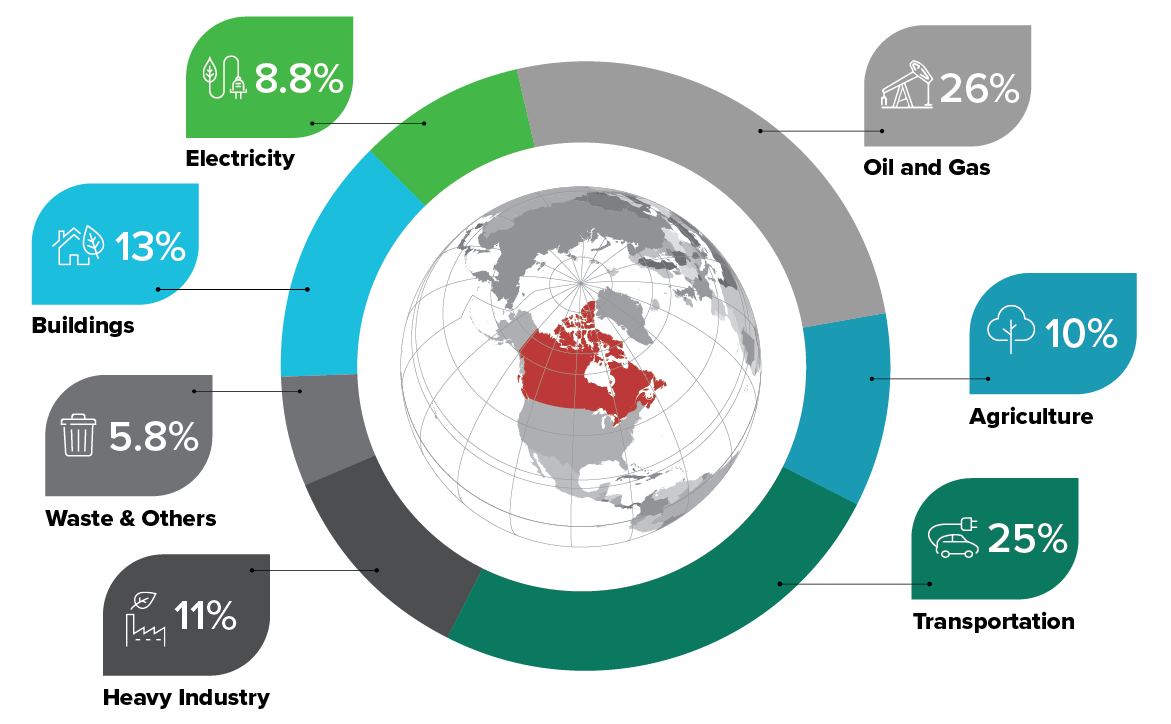Why is Methane Emissions Such a Hot Topic?
Methane (CH4) emissions continue to be at the top of the list along with the buzz of climate change
and companies are releasing their environmental, social and corporate governance (ESG) reports
which contain goals for reduction of emissions.
Why Methane?
What makes methane (CH4) a hot topic for the general public, private and public corporations, federal and provincial governments, and arm’s length organizations?
Based on scientific data some gases are more effective than others at making the planet warmer and thickening the Earth’s blanket.
A global warming potential (GWP) for each greenhouse gas has been calculated to reflect on average, how long it remains in the atmosphere and how strongly it absorbs energy. Gases with a higher GWP absorb more energy per pound than gases with a lower GWP. Gases with the higher
GWP contribute more to warming the Earth’s atmosphere.
On average, methane (CH4) emitted today lasts approximately a decade. This is much less than carbon dioxide (CO2); however, CH4 absorbs more energy than CO2. The net effect of the shorter lifetime and higher energy absorption is reflected in the GWP. The CH4 global warming potential accounts for indirect effects; e.g. CH4 is a precursor to ozone which is a greenhouse gas.
Common Greenhouse Gases
Carbon dioxide (CO2) is the most common greenhouse gas (GHG) and has a global warming potential (GWP) of 1. Methane (CH4) has a GWP between 28 and 36. In Canada a GWP of 25 is
used for GHG reporting. In layman’s terms this equates to 1 kg of CH4 and is the equivalent of 25 kg of CO2.
Other common greenhouse gases are nitrous oxide (N2O) which makes up part of NOx, sulphur hexafluoride (SF6), and nitrogen trifluoride (NF3). N2O has a GWP of 298, a SF6 of 22,800, and a NF3 of 17,200.
So What Makes Methane the Hot Topic?
CH4 is not the most intense greenhouse gas. There are a few contributing factors as to why it is a topic that everyone is talking about.
- Methane is the gas produced extensively by the livestock industry worldwide, traps up to 100 times more heat in the atmosphere than carbon dioxide within a 5 year period, and 72 times more within a 20 year period. The good news is that methane leaves the atmosphere within a decade. This makes for a short-lived, but intense climate changer.
- Methane, if economically captured and vented to the atmosphere, can be easily sold as a commodity through pre-existing infrastructure unlike CO2 or other greenhouse gases. This is becoming a factor given the relatively strong natural gas pricing that we are experiencing in comparison to oil prices.
- The majority of methane emissions in western Canada come from two of our largest industries: agriculture and oil and gas production. In comparison to CO2 emissions, both of these industries have the opportunity to reduce these methane emissions with relatively lower capital expenses.
- For example, every kg of methane reduced is the same as reducing 25 kg of CO2. The majority make up of natural gas is CH4. When CH4 is combusted a much lower amount of CO2 and other greenhouse gases are produced. There are carbon credit protocols predicated on this same principle as an option to offset emissions, rather than vent natural gas combust it – it will equate to a lower CO2 equivalent emission.
Methane Emissions in Oil & Gas
Natural gas has always been utilized in the oil and gas industry to drive pneumatic devices. This is a cheap and reliable source of energy at remote sites. Producers currently have options to reduce or eliminate these emissions by taking advantage of the different sources of funding and economic drivers. Clients from an economic and regulatory perspective are finding it difficult to navigate this ever-changing landscape.
Acronyms all start to sound the same: e.g., MTIP, BROA, IEE CCUS, NRCan, ERF. There are services that go into the identification, measurement, and quantification of methane; e.g., FEMP, LDAR, CVS, BROA, or the regulations, frameworks, and programs; e.g., TIER, ERA, EEA … the list goes on.
New methane regulations are expected to reduce 20 million tonnes of methane in 2030. This is equivalent to taking approximately 5 million passenger vehicles off the road each year.
Environmental Services and Consulting
At Intricate, we are here to help and support in any way possible.
- You may simply require help or advise on the submission of an application for funding;
- You may want to explore the advantages of voluntary carbon credit offsets to reduce emissions and generate additional revenue;
- You may need help building your corporate FEMP manual or require help understanding the complex MSAPR regulations;
- You may need to schedule LDAR surveys where simple and logical repairs can be done while we are at site; or
- Maybe a bundled service of compressor vent seal testing and LDAR, or MSAPR testing is going to meet your tight budgetary limits.
We would be glad to navigate you through these challenging times.
Feel free to reach out to any of us here at Intricate 587-760-1616 or email colingendre@intricategroup.com



